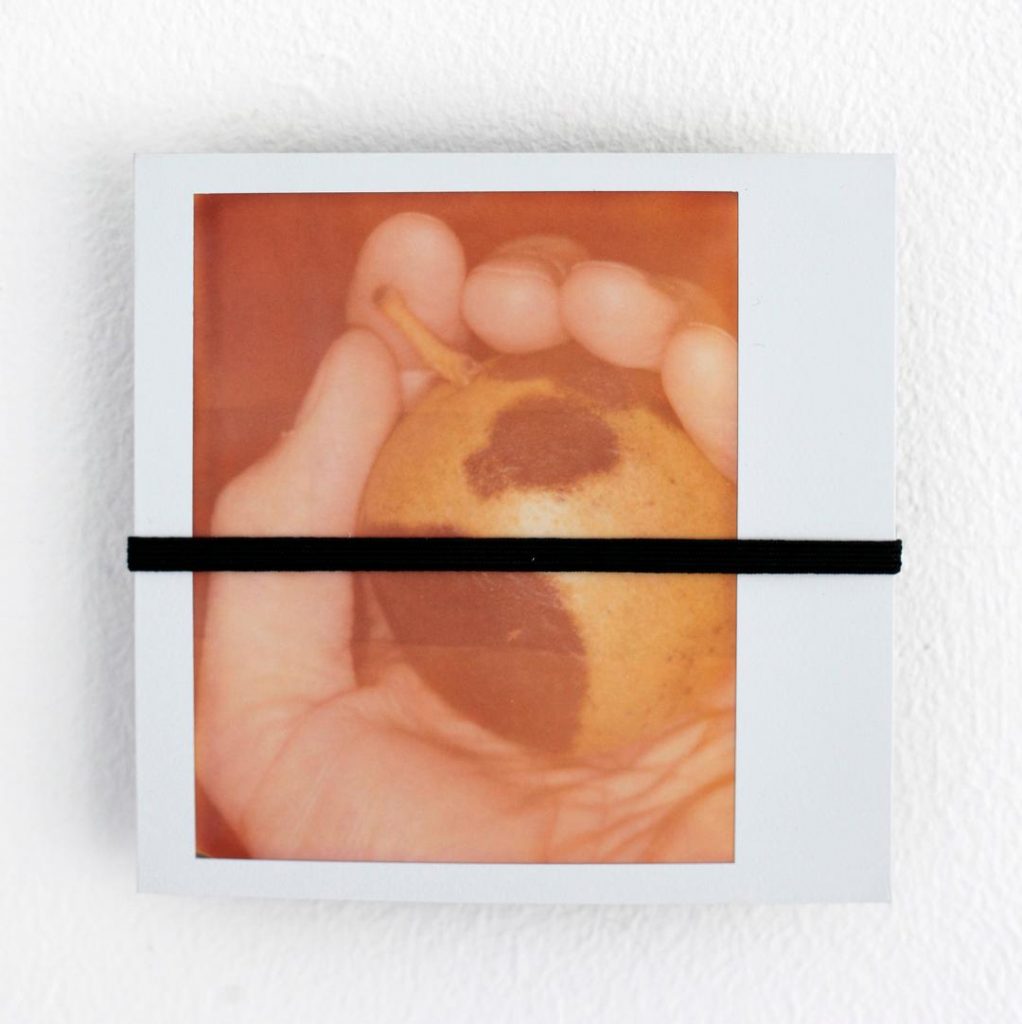
The Spots That Never Went (Spectra Polaroid, elastic band, screws) Roelof Bakker
I have known artist/photographer Roelof Bakker for ten years, since he produced and published Still (2012) a book of his photographs from the disused Hornsey Town Hall with accompanying short stories. Each writer was asked to choose a photo and I chose a clock stuck at ten o’clock, which somehow brought forth a story about Napoleon and the ten-hour clock: but enough of that. Roelof Bakker’s work is tender and sinuous, with beauty and sometimes menace. I asked him a question for IT.
JW – Once you see something, and it strikes you as a possibility for art, what are your internal processes? Do you start with an idea and look for a corresponding image? Or does something you see in the world jump-start something in you? What happens first?
RB – Thanks Jan… Interesting question, it’s a tricky one because with each project, or with individual works, I use different approaches, it’s a random process – it’s about surrendering or responding to a feeling or emotion, to a thought or a question, to a memory, to self-reflection, to the subconscious, to an event, to a text or words, to a physical thing (a work of art, the natural world, a sign), to a person, to a place or often to process itself.
My work always has a personal connection, from my statement, ‘With my creative projects I process life experiences and events, playing with form and format, exploring issues relating to health, history, queerness and the environment.’
The project The Spots That Never Went evolved from a Polaroid photograph I took of a rotten, spotted, apple held tenderly in the palm of my hand. It reminded me of a press photograph of Princess Diana holding the hand of a man living with AIDS in 1987, an event helping signify the end of misinformation about how HIV could be transmitted. The spots on the apple connect visually to the appearance of Kaposi’s sarcoma, a skin cancer which manifested itself in the later stages of AIDS. The Polaroid image and the connection to the Princess Diana photograph (a symbol of care, love and understanding), led me to explore a process of making multiple images of the apple photograph, applying an extreme halftone screen (a photograph is converted to dots for reproduction in a publication, like a tabloid newspaper) to the image, then taking small fragments of this to make a series of twelve abstract images conveying forgotten history and fragmented memories, also communicating ideas about life and death, loss and hope and HIV-positive and HIV-negative status.
They were positioned on the pages of a tabloid newspaper, opposite brief sentences of personal memories of the 1980s/90s AIDS crisis, each sentence starting with ‘I remember a time…’, like ‘I remember a time when the police raided bars and clubs wearing decontamination suits and gloves.’ and ‘I remember a time when I was young and other young men got ill and soon after they died.’
The images and the texts appear in a tabloid newspaper, I wanted to reclaim this format from the hateful tabloid newspaper reporting (The Sun, News of the World, etc) of people living with AIDS and gay men and lesbians in the 1980s, something Derek Jarman writes about in At Your Own Risk (1991).
My book has been reinvented as an exhibition, to be shown in Brixton’s Photofusion in October-December 2021, following on from a show during Gay History Month 2020 in Cambridge.
https://rbakker.com/The-Spots-That-Never-Went/
JW – What are you currently working on?
RB – I’m working on the design of three artist’s books for projects I started during a self-assigned lockdown residency at The Queer Hut, a desolate wooden structure standing on a disused railway embankment overlooking Cambridgeshire fields. Each book highlights a different aspect of the negative impact of mankind on the environment and will be published through my press, Negative Press London. I’m also finalising a project about asthma and air pollution, experimenting with analogue photographic processes, video, writing, appropriation and performance.
https://rbakker.com/What-Is-It-I-Breathe-In-Every-Day
JW – Thank you, for someone about to paint again that has been enormously helpful, revealing and a little bit scary.
Jan Woolf
https://rbakker.com/The-Spots-That-Never-Went/
